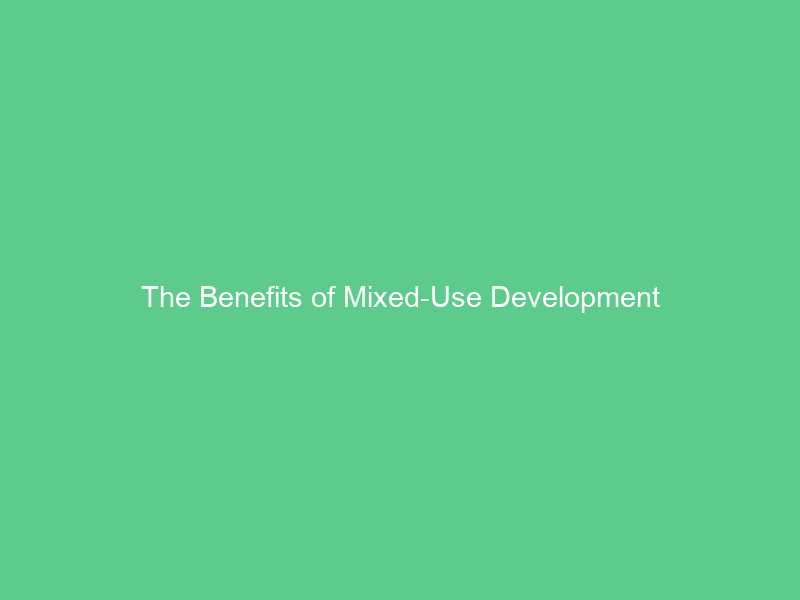Mixed-use development brings residential, commercial, and other asset classes closer together for increased quality of life for residents, by providing convenient access to daily needs while decreasing reliance on private vehicles.
Communities seeking to implement mixed-use development should ensure all stakeholder needs and goals are taken into account through an equitable engagement process, to distribute benefits more equitably while also identifying local priorities for spaces that accommodate multiple uses (Nelson 2012).
High Occupancy Rates
Combining residential and commercial spaces together creates a self-sustaining economic ecosystem that supports local communities in many ways. Such integration helps foster job creation, increase property values and creates an opportunity for small businesses to grow.
Millennials and Gen Z consumers increasingly seek live-work-play environments that reduce commute times. By providing groceries stores, restaurants, coffee shops, gyms, medical clinics and medical practices in one convenient place, mixed-use developments appeal to consumers’ desire for convenience and productivity.
TOMUD projects often incorporate public spaces that encourage social interaction and reduce dependence on cars, which fits with local government priorities for livable, sustainable communities while fulfilling Complete Communities goals. Furthermore, consolidation infrastructure leads to cost savings for developers.
Lower Vacancy Rates
With high rental demand and limited vacancy rates, it is critical for mixed-use buildings and developments to keep vacancy rates at a minimum. A suitable tenant mix coupled with fast and reliable connectivity are critical in keeping tenants satisfied, which contributes to overall occupancy rates and income generation.
Integrated living reduces commute times and fuel consumption by giving residents easy access to amenities like grocery stores, restaurants, cafes, and shops in one area – an advantage which promotes sustainable lifestyles and a balanced work-life balance.
Residential-commercial coexistence also benefits local businesses by creating an economic ecosystem which supports small enterprises to thrive and is self-sufficient, leading to urban prosperity.
Convenient Access
Mixed-use developments provide residents with an ideal setting for social interactions between residential and commercial spaces, encouraging interaction among them. For instance, living in a high-rise with retail shops on the ground floor and apartments above can allow residents to easily walk to restaurants, coffee shops, drug stores and other amenities they need on a daily basis without needing a car or waiting for transport – creating an instant sense of community and encouraging spontaneous interactions that strengthen relationships.
Walking distance amenities encourage healthy lifestyles. Walkable communities can reduce car use, improving air quality and traffic congestion; foster social connectivity between neighbors; create a sense of community for both residents and visitors.
Development of mixed-use developments requires intensive collaboration among architects, engineers, and city officials in order to comply with local regulations and standards. But such an approach is an absolute necessity for cities who wish to stay ahead of competition by welcoming the future with open arms.
Connectivity
Mixed-use developments feature seamless integrations of residential and commercial spaces, creating easy access to shops, restaurants and services without long commutes. Furthermore, this model creates a self-sustaining economic ecosystem which can withstand economic fluctuations; additionally it encourages entrepreneurial spirit by supporting small businesses.
Furthermore, walking and bicycling to work, shopping, entertainment, dining and entertainment venues provides residents with more social interactions between one another – in one landmark study it was shown that neighborhoods with lower vehicle traffic had three times as many friends and acquaintances than those with greater car usage.
Local governments looking to foster mixed-use development should review their zoning regulations, subdivision and land development codes to identify any obstacles to this form of community design. They should then focus on creating walkable environments that prioritize pedestrians through wide sidewalks and engaging streetscapes that facilitate their movement; further encouraging public transit systems or bike sharing programs as an alternative mode for daily errands.

